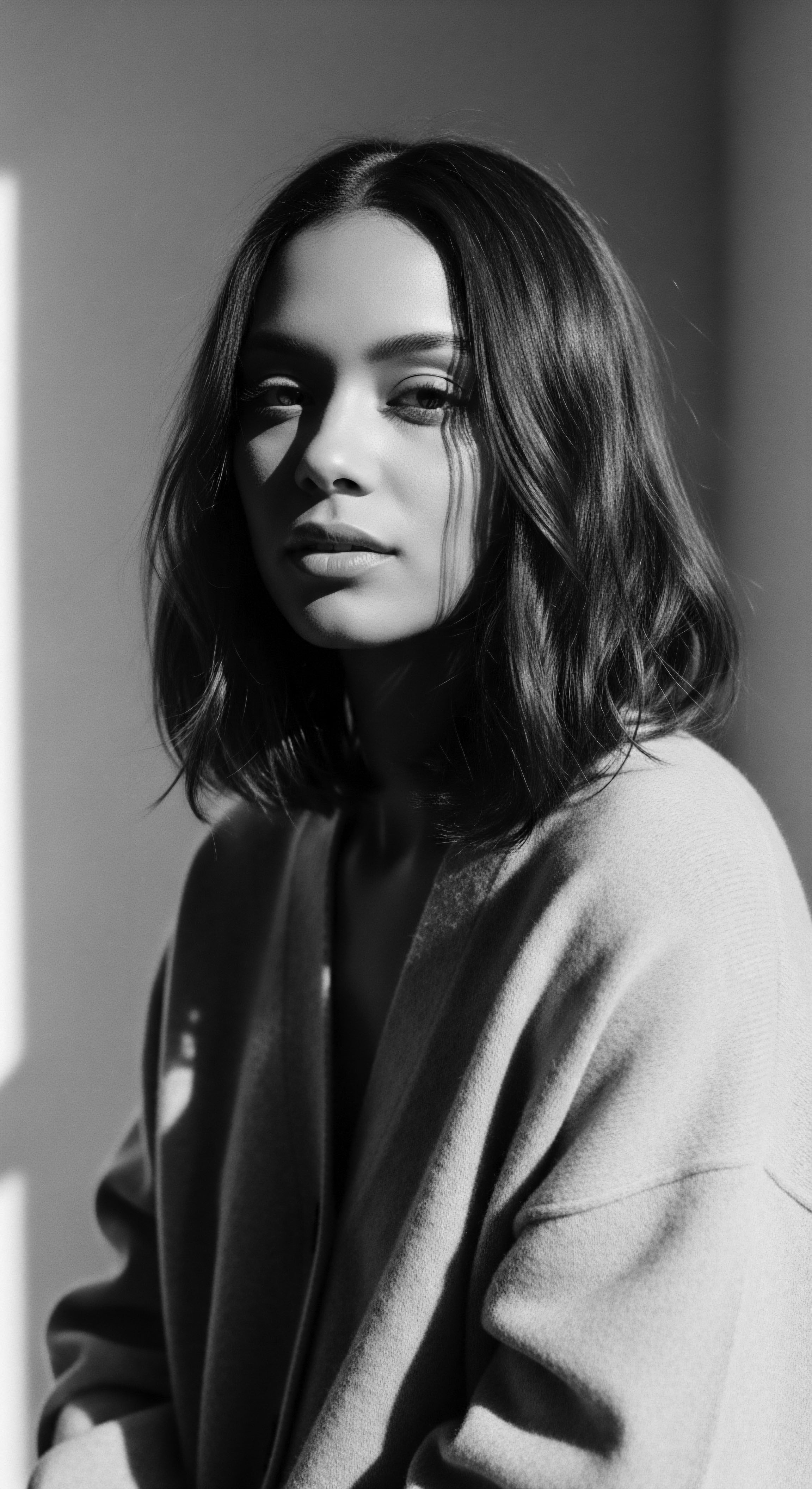
Roots
The very fibers that crown the heads of those with African ancestry carry narratives untold, a cellular memory stretching back through countless generations. This textured legacy, sculpted by eons of evolution and cultural practice, served as far more than mere adornment in ancestral African societies. It stood as a profound marker, a living record, conveying identity, status, spirituality, and lineage within vibrant communities.
Each curl, each coil, each kink held a distinct communicative purpose, a non-verbal lexicon understood across vast landscapes and diverse peoples. To truly grasp this ancient presence, one must look beyond surface appearances and consider the elemental biology that shaped this heritage, and the conceptual frameworks through which it was perceived.
From the Saharan plains to the verdant forests, hair was seen as a conduit between the spiritual and physical realms. The crown of the head, being the highest point of the body, was often regarded as a sacred gate, a pathway for divine energy and ancestral wisdom to enter. This reverence translated into meticulous care and ritualistic engagement with hair, recognizing its vital link to individual well-being and communal harmony.
The density and resilience of textured strands, often misunderstood in later contexts, were in ancient times seen as signs of vitality and divine favor. The natural coiling pattern, so unique to African hair, was often mirrored in art, architecture, and spiritual symbols, underscoring its inherent connection to the cosmos.

Hair’s Structural Echoes in Ancestral Views
The distinct morphology of African textured hair—its elliptical cross-section, irregular cuticle layers, and varied curl patterns—is a marvel of biological adaptation. These characteristics, now understood through modern microscopy, were instinctively recognized and celebrated by ancestral populations. The inherent strength and spring of coily strands, for instance, lent themselves to intricate, gravity-defying styles that would be impossible with other hair types.
These styles were not random; they were expressions of kinship, spiritual allegiance, and life passages. The very way a strand spiraled from the scalp, or how a cluster of coils intertwined, could indicate an individual’s family origins or even their spiritual gifts.
Ancestral African hair carried a communicative purpose, a non-verbal lexicon understood across vast landscapes.
The scientific comprehension of hair anatomy, while a modern discipline, finds its distant echoes in ancestral practices. The understanding that hair grew from the scalp, that its condition reflected internal health, and that certain preparations could enhance its strength and appearance, were all deeply ingrained knowings. For example, the recognition of hair’s porous nature likely led to the use of oils and butters to seal in moisture, a practice that sustained hair health in arid climates long before the molecular structure of keratin was known. This ancestral wisdom, passed down through generations, became the bedrock of hair care traditions that continue to inform practices today.
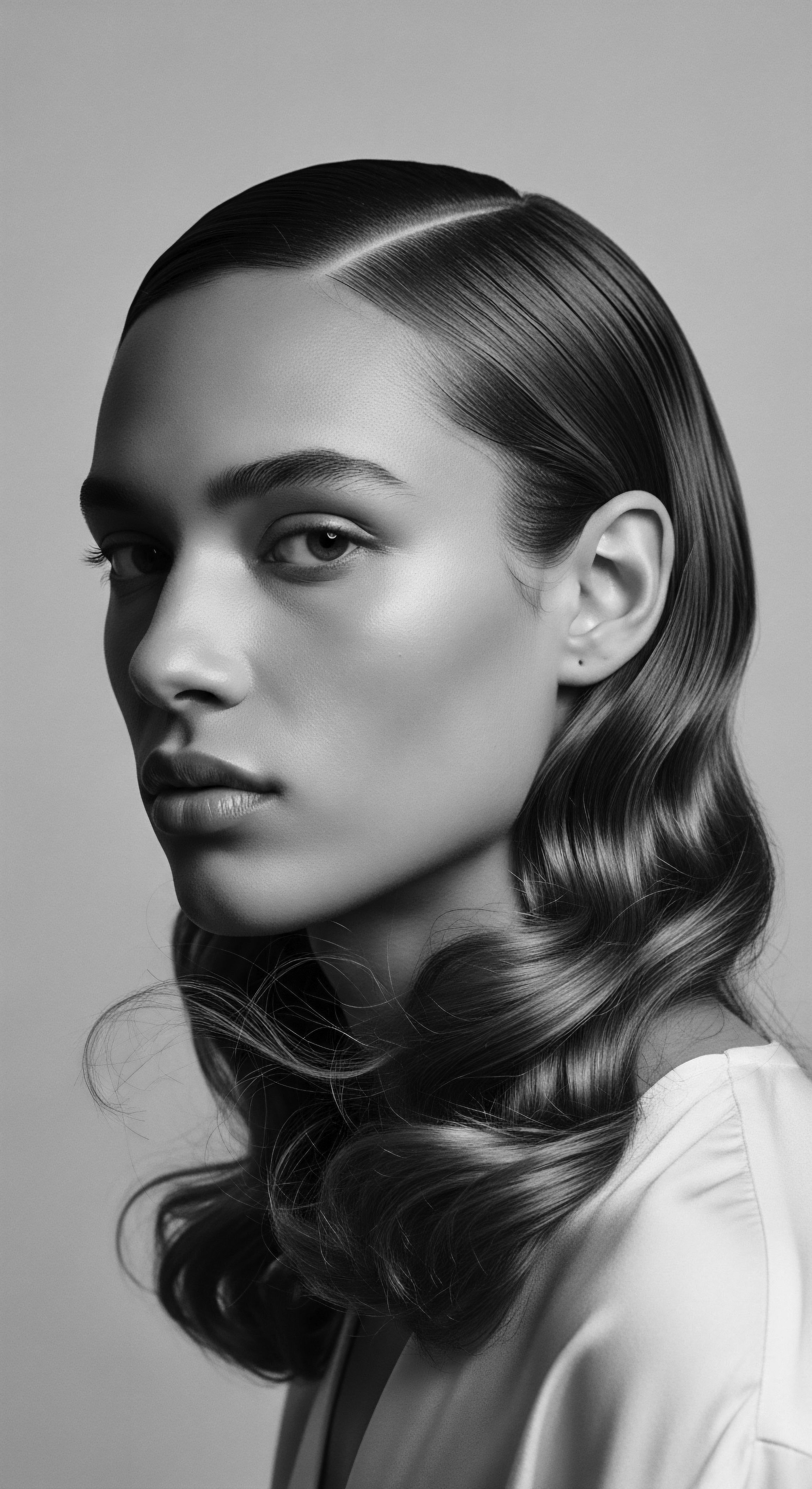
Mapping the Heritage of Hair Types
While modern systems classify textured hair into numerical and alphabetical types (e.g. 3C, 4A), ancestral African societies had their own, more fluid, and culturally situated classifications. These systems were less about precise curl diameter and more about the hair’s overall appearance, its response to moisture, and its suitability for various symbolic styles.
For instance, hair that was particularly dense and capable of holding elaborate coiffures might be associated with leadership, while softer, more pliable textures could signify youth or spiritual receptivity. These distinctions were not rigid but rather descriptions tied to social roles, rites of passage, and aesthetic ideals.
| Aspect of Hair Curl Pattern |
| Ancestral Interpretation Symbolic links to spirals, cosmos, spiritual pathways; indicates lineage or status. |
| Contemporary Scientific View Variations in follicle shape and keratin distribution; affects manageability and product absorption. |
| Aspect of Hair Hair Density |
| Ancestral Interpretation Sign of vitality, strength, abundance, or leadership. |
| Contemporary Scientific View Number of hair strands per square inch of scalp; impacts volume and protective capabilities. |
| Aspect of Hair Hair Length |
| Ancestral Interpretation Marks of wisdom, seniority, or spiritual power (often less about physical length, more about growth potential). |
| Contemporary Scientific View Determined by the anagen phase of the hair growth cycle; influenced by genetics, diet, and care. |
| Aspect of Hair Hair Luster |
| Ancestral Interpretation Reflection of internal health and spiritual well-being; highly valued aesthetic quality. |
| Contemporary Scientific View Smoothness of the cuticle layers reflecting light; enhanced by proper moisture and sealing practices. |
| Aspect of Hair The enduring heritage of textured hair spans millennia, its meaning adapting from sacred symbol to biological marvel. |
The lexicon surrounding textured hair in ancient Africa was rich with descriptive terms that honored its unique qualities. These words, often tied to specific local languages and dialects, painted vivid pictures of hair textures and the cultural significance attributed to them. They spoke of hair like sheep’s wool, peppercorns, or tightly coiled springs, each term carrying a cultural weight that a mere numerical classification cannot convey. These are not merely ancient words; they are linguistic artifacts that preserve a worldview where hair was deeply intertwined with the identity of the person and their community.
The very cycles of hair growth, from its sprouting to its eventual shedding, were often seen as metaphors for life itself – birth, growth, decline, and renewal. Ancestral communities likely observed these cycles with keen interest, connecting them to agricultural rhythms, moon phases, and human fertility. Environmental factors, too, played a silent yet powerful part.
Diet, climate, and access to natural resources influenced hair health, prompting the development of localized care traditions utilizing indigenous plants, minerals, and animal fats. This deep environmental reciprocity meant that hair care was never separate from daily life; it was a testament to living in concert with the land and its bounties.

Ritual
The rendering of hair in ancestral Africa transcended mere aesthetic pursuit; it was a living ritual, a continuous dialogue between spirit, identity, and community. Styling techniques, tools, and the very act of hair preparation were deeply embedded in the daily rhythms and momentous occasions of life. These practices, passed from elder to youth, mother to daughter, friend to friend, were repositories of knowledge and cultural continuity, defining a heritage that persists even today. The meticulous coiling, braiding, or twisting of textured hair was a performative act, often carrying spiritual protection, social messages, or markers of personal growth.
From the intricate cornrows of West Africa, which could denote marital status or tribal affiliation, to the towering coiffures of Southern Africa, symbolizing wisdom and leadership, each style spoke volumes. The resilience of textured strands meant they could be sculpted into architectural wonders, defying gravity and time, holding their shape for weeks. This inherent structural quality of African hair allowed for styles that were not only beautiful but also eminently practical, providing protection from the elements, especially the harsh sun, and minimizing daily manipulation. These protective styles, far from being just a trend, were an enduring wisdom, a legacy of sustainable care that minimized breakage and promoted growth.
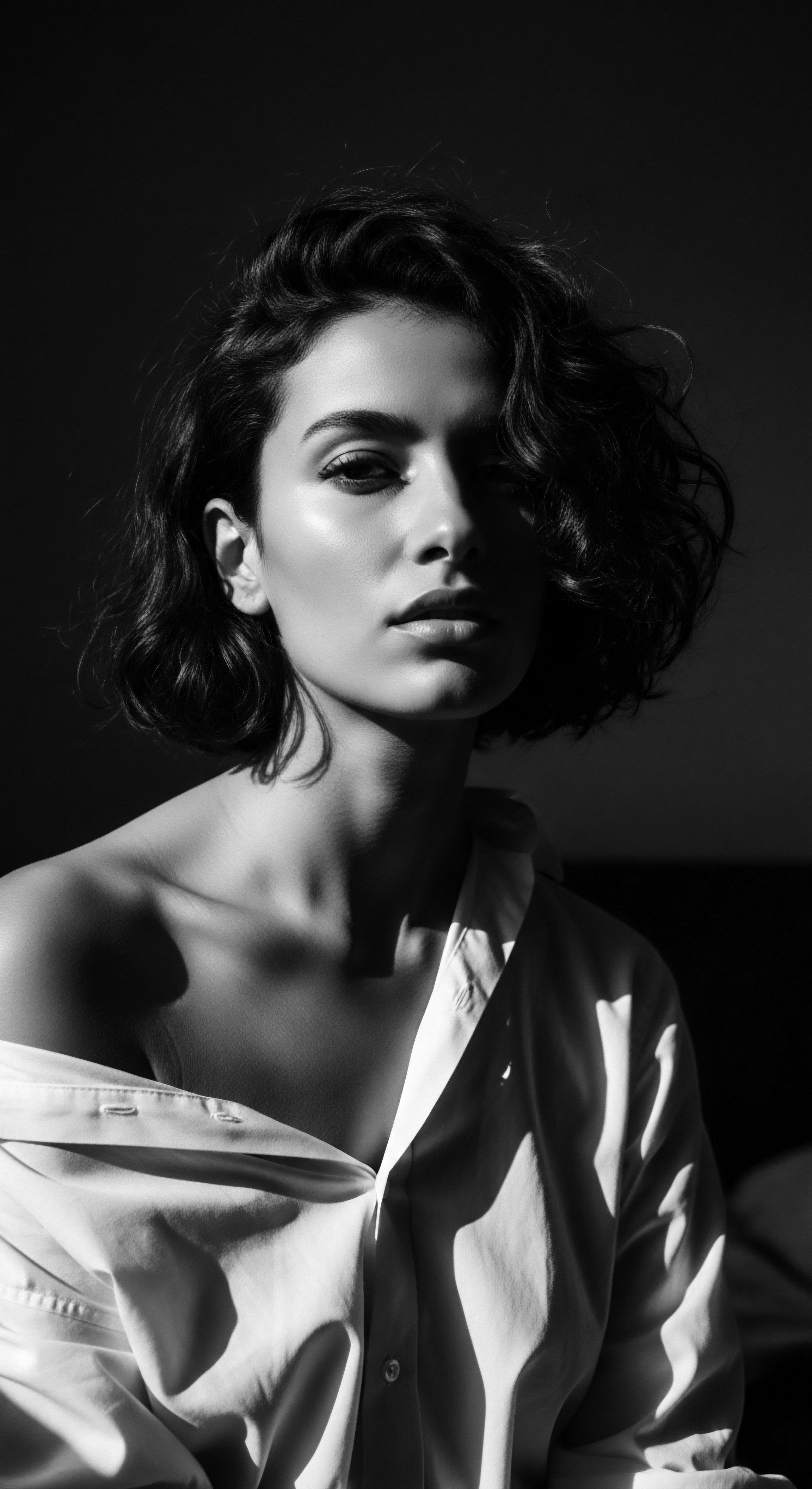
What Narratives Do Ancient Styling Tools Convey?
The tools employed in ancestral hair practices were often humble yet ingeniously effective, crafted from materials readily available in the environment. Bone, wood, ivory, and natural fibers were shaped into combs, pins, and adornments. These items were not simply utilitarian; they often carried symbolic meaning, perhaps carved with ancestral motifs or passed down as heirlooms, embodying the accumulated wisdom of previous generations. The act of using these tools became a tactile connection to the past, a repetition of movements performed by countless hands before.
- Combs ❉ Often wide-toothed and sturdy, designed to gently detangle the dense, coily textures. Many were elaborately carved, serving as personal items of great value.
- Pins and Needles ❉ Fashioned from bone, wood, or metal, these were used to secure intricate updos, extensions, and decorative elements within styles.
- Natural Fibers ❉ Grasses, bark, and plant materials were braided or woven into hair as extensions, adding length, volume, or structural support for elaborate coiffures.
- Adornments ❉ Beads, cowrie shells, precious metals, clay, and even organic materials like feathers or fresh flowers were incorporated into styles, communicating wealth, status, marital eligibility, or spiritual protection.
A powerful instance of hair as a communicative medium can be seen in the hairstyles of the Yoruba people of Nigeria. Different styles, such as the Suku (braids woven to form a basket-like shape on top of the head) or Kolese (a style indicating mourning or widowhood), conveyed specific social information without a single word being uttered (Akbar, 2017, p. 45).
The very creation of these styles was a communal act, often performed by women in shared spaces, fostering bonds and transmitting cultural lore. It was in these moments that stories were exchanged, wisdom imparted, and communal ties strengthened, making hair styling a deeply social ritual.
The intricate shaping of textured hair in ancestral Africa was a living ritual, a continuous dialogue between spirit, identity, and community.
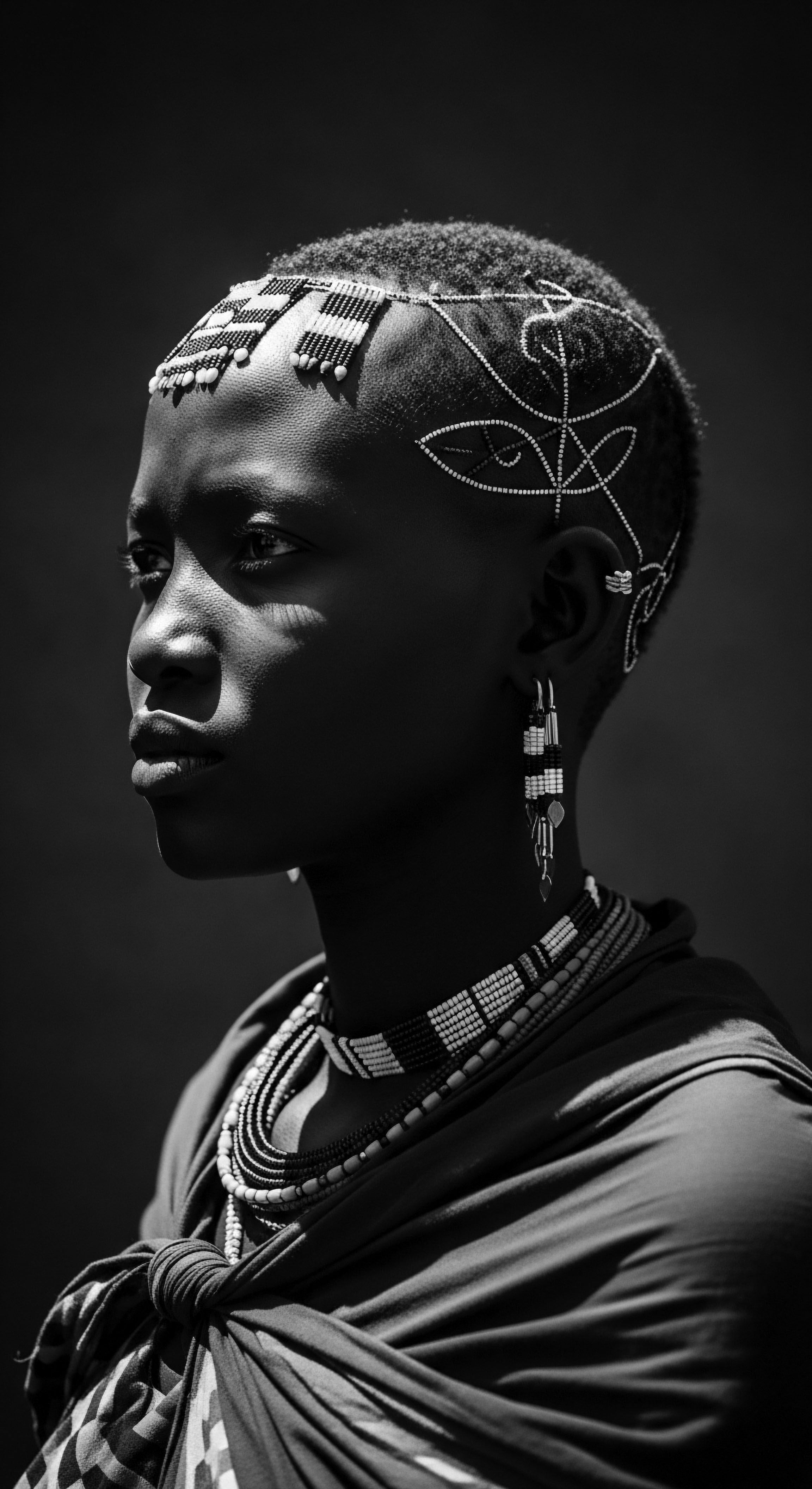
How Did Hair Serve as a Transformative Canvas?
Hair served as a canvas for profound transformations, marking significant life transitions and rites of passage. From birth to initiation, marriage to elderhood, hairstyles changed, symbolizing new responsibilities, altered status, or spiritual awakenings. A child’s first haircut, a maiden’s preparation for marriage, or an elder’s distinguished grey strands, all held specific cultural weight and were often accompanied by ceremonies and communal blessings. These transformations were not superficial; they were visible declarations of an individual’s journey through life, acknowledged and celebrated by the collective.
The concept of hair extensions and wigs also finds deep roots in ancestral African practices, long predating their modern commercial manifestations. In ancient Egypt, for example, elaborate wigs made from human hair, plant fibers, or even wool were worn by both men and women, signifying status, cleanliness, and protection from the sun. These wigs were often intricately braided or adorned, reflecting the wearer’s position in society.
Similarly, various West and Central African groups used hair from other sources—sometimes from ancestors, sometimes from animals, or plant fibers—to add volume, length, or structural integrity to hairstyles for specific ceremonial purposes or daily wear. This practice reveals an early understanding of hair as a malleable medium, capable of artistic and symbolic manipulation beyond its natural growth.
| Technique Braiding |
| Ancestral Context Symbolized social status, marital status, spiritual beliefs, tribal identity. Served as protective styling. |
| Modern Parallel/Continuation Cornrows, box braids, knotless braids; remain popular protective styles for versatility and hair health. |
| Technique Twisting |
| Ancestral Context Used for protective styles, often signifying readiness for rites of passage or communal gatherings. |
| Modern Parallel/Continuation Two-strand twists, flat twists; favored for defining natural curl patterns and minimizing manipulation. |
| Technique Coiling/Locing |
| Ancestral Context Deeply spiritual; seen as a connection to the divine, ancestors, and natural forces. |
| Modern Parallel/Continuation Dreadlocks, freeform locs, sisterlocks; continue to carry spiritual weight for many, alongside aesthetic appeal. |
| Technique Adornment |
| Ancestral Context Expressed wealth, social rank, beauty, tribal affiliation, or spiritual protection. |
| Modern Parallel/Continuation Hair jewelry, wraps, scarves; still used for aesthetic enhancement and cultural expression. |
| Technique Ancestral styling methods persist, their practical wisdom and symbolic power enduring through generations. |
Even heat styling, in rudimentary forms, might have been practiced ancestrally, though certainly not with the intense temperatures of modern tools. For example, some traditions involved warming natural oils or herbs before application, or gently exposing hair to steam from natural preparations to improve pliability or aid in styling. The guiding principle was always to work with the hair’s natural qualities, not against them, promoting its health and longevity through respectful engagement. The ancestral practices were rooted in a deep understanding of what textured hair required to thrive in its natural state, a wisdom that stands in powerful contrast to later attempts to alter its inherent structure.
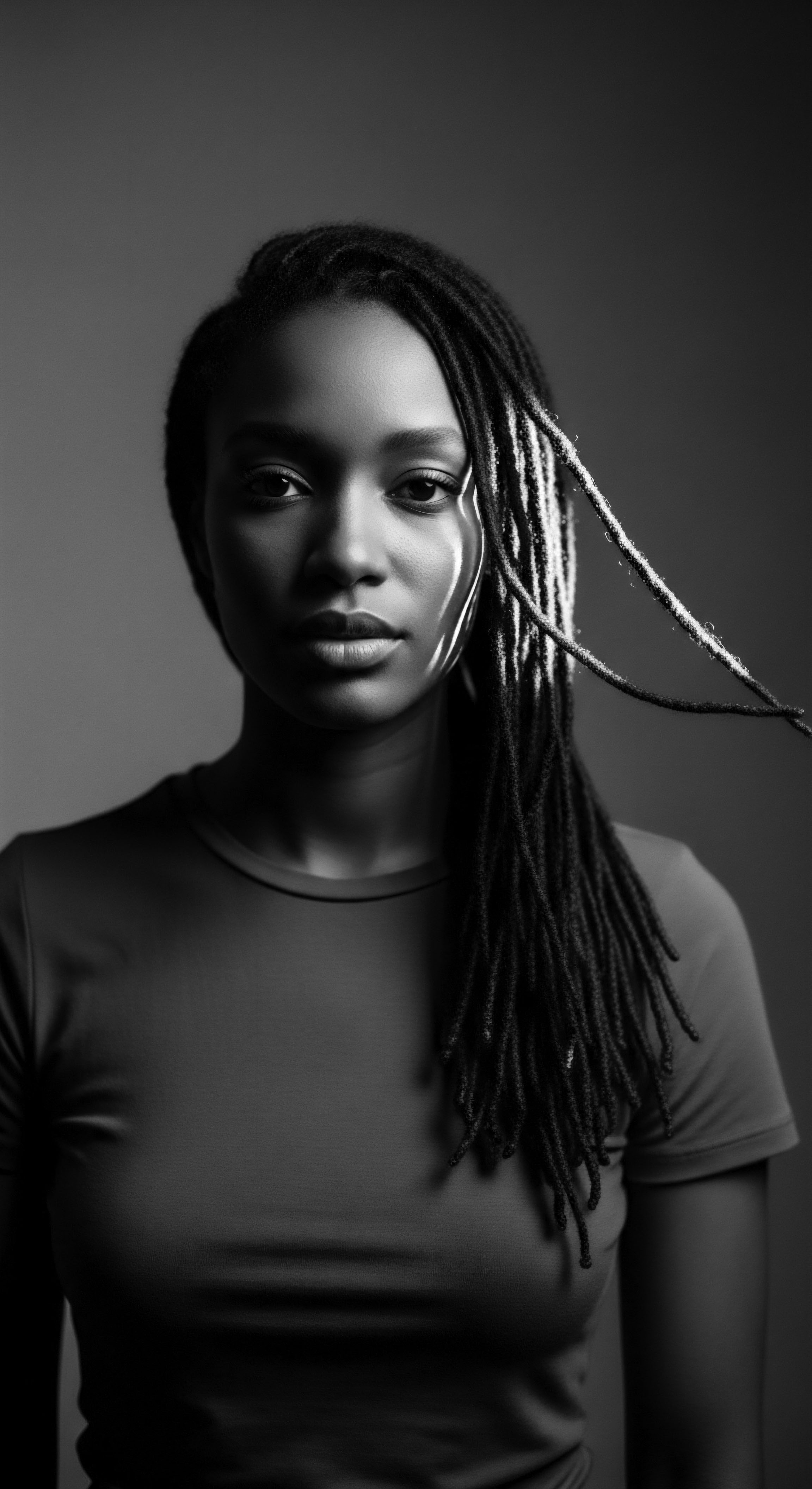
Relay
The legacy of African ancestral identity, when viewed through the lens of hair, extends beyond historical styles and tools; it encompasses a holistic philosophy of care and well-being that continues to reverberate in contemporary practices. The journey of textured hair care, from ancient communal rituals to modern individualized regimens, represents a dynamic relay race of wisdom, adapting and transforming through time, yet always carrying the baton of ancestral knowledge. This deep understanding recognized that hair health was inextricably linked to internal balance, environmental harmony, and spiritual alignment.
Ancestral communities intuitively understood the concept of ‘holistic’ care long before the term became widely used. Hair was not an isolated entity but an extension of the body and spirit. Practices were guided by the belief that what nourished the body and soul also nourished the hair.
This often meant sourcing ingredients directly from the earth – nourishing plant oils, mineral-rich clays, and cleansing herbs – and preparing them with reverence. The act of applying these preparations was often a meditative, communal experience, a ritual of connection and nourishment.

How Does Ancestral Wisdom Shape Modern Hair Regimens?
The idea of a ‘regimen’ for textured hair, so common today, finds its true origins in ancestral wisdom. These were not rigid, prescriptive schedules but rather consistent patterns of care rooted in observation and the seasons. For example, in regions with distinct dry and rainy seasons, hair care practices would adapt accordingly, favoring more moisturizing treatments during arid periods and lighter preparations during humid ones.
The consistency of these practices, tailored to individual needs and environmental conditions, promoted optimal hair health over a lifetime. This bespoke approach, informed by generations of practical application, contrasts with a one-size-fits-all mentality.
The nighttime sanctuary, specifically the use of head coverings like bonnets, durags, and wraps, stands as a direct, tangible relay of ancestral wisdom into modern practices. While the term ‘bonnet’ might be contemporary, the practice of protecting hair during sleep is deeply rooted in African heritage. Ancestral communities likely used soft cloths, animal skins, or woven plant materials to cover and protect hairstyles, preserving their integrity, cleanliness, and sacred status. This protective layer shielded delicate styles from friction and environmental debris, allowing them to last longer and maintain their shape for ceremonial or social purposes.
The concept of hair’s holistic care, from ancient communal rituals to modern routines, represents a dynamic relay race of enduring wisdom.
The preservation of hairstyles during rest also extended the period between styling sessions, minimizing manipulation and thereby reducing breakage. This practical wisdom, born of necessity and passed down through oral tradition, now finds validation in contemporary hair science, which affirms the critical role of satin or silk head coverings in reducing friction, preventing moisture loss, and maintaining the structural integrity of textured strands. The simple bonnet thus stands as a powerful symbol of continuous cultural memory, a testament to the ancestral insight into protective care.
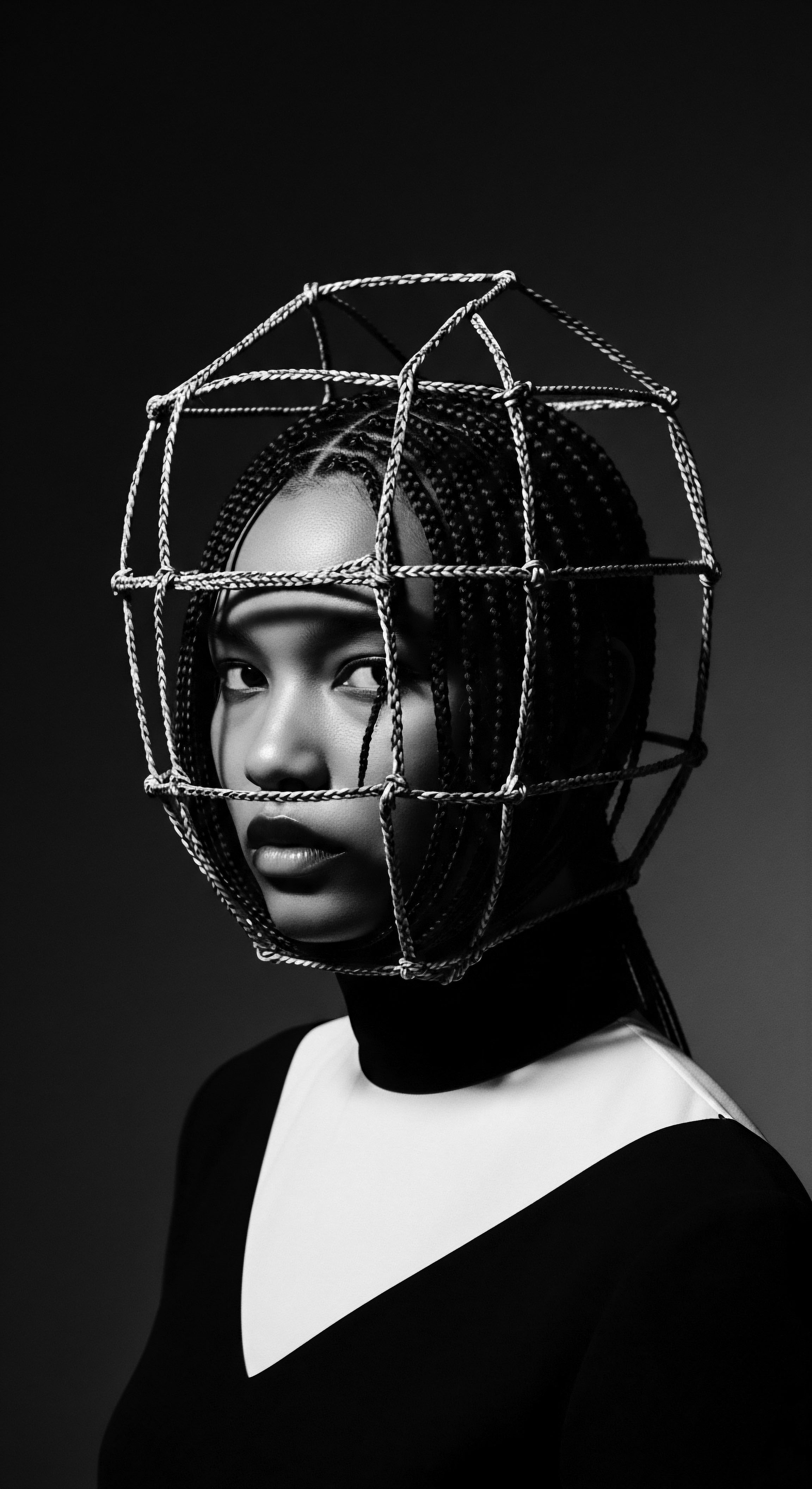
What Ancestral Ingredients Offer Enduring Value?
Many ingredients revered in modern textured hair care products draw directly from ancestral pharmacopoeias. These were not discovered in laboratories but through generations of empirical observation and use within African communities. The efficacy of these traditional components has been sustained through countless applications and continues to be honored in ethical formulations today.
- Shea Butter ❉ Sourced from the nuts of the African shea tree (Vitellaria paradoxa), shea butter has been used for millennia for its intensely moisturizing and protective qualities, shielding hair from sun and harsh elements.
- Argan Oil ❉ Derived from the kernels of the argan tree (Argania spinosa) native to Morocco, this oil was traditionally used by Berber women for its nourishing and shine-enhancing properties.
- Baobab Oil ❉ Extracted from the seeds of the majestic baobab tree (Adansonia digitata), this lightweight oil, rich in vitamins, was used for its conditioning and scalp health benefits in various African regions.
- Rhassoul Clay ❉ A mineral-rich clay from the Atlas Mountains of Morocco, traditionally used for cleansing and detoxifying both skin and hair, drawing out impurities without stripping natural oils.
The addressing of common hair challenges also found ancestral solutions. Dandruff, breakage, or slow growth were not viewed merely as cosmetic issues but often as indicators of an imbalance within the body or spirit. Traditional healers and hair specialists employed specific herbs, massage techniques, and dietary adjustments to rectify these imbalances.
For instance, certain plant extracts known for their anti-inflammatory or stimulating properties might be applied to the scalp to address flaking or to encourage growth. These practices underscore a deep understanding of the connection between internal health, scalp condition, and hair vitality.
The ancestral wellness philosophies recognized that hair health was also influenced by mental and emotional states. Stress, sorrow, or joy could visibly impact the hair’s appearance. Thus, hair care rituals often incorporated elements of meditation, communal support, and spiritual grounding. The communal braiding sessions, for example, were not just about styling; they were therapeutic spaces where anxieties could be shared, wisdom exchanged, and a sense of belonging reaffirmed.
This holistic lens, where hair is a barometer of overall well-being and a focal point for care that extends beyond the physical, remains a cornerstone of the Textured Hair Heritage. It is a powerful reminder that our hair’s journey is deeply intertwined with our entire being, a continuous relay of ancestral wisdom for thriving in the modern world.
| Hair Concern Dryness/Brittleness |
| Ancestral Approach (Heritage) Regular application of rich plant oils (e.g. shea, coconut, olive), animal fats; hair steaming with herbs. |
| Modern Scientific Understanding/Solution Emollients, humectants (glycerin, hyaluronic acid); deep conditioning treatments; avoiding sulfates. |
| Hair Concern Scalp Irritation/Flaking |
| Ancestral Approach (Heritage) Herbal rinses (e.g. neem, tea tree), medicinal clays, scalp massages to improve circulation. |
| Modern Scientific Understanding/Solution Antifungal agents (zinc pyrithione, selenium sulfide), anti-inflammatory ingredients; proper cleansing. |
| Hair Concern Hair Loss/Thinning |
| Ancestral Approach (Heritage) Scalp stimulation with stimulating herbs (e.g. rosemary, peppermint), nutrient-rich diets, protective styles. |
| Modern Scientific Understanding/Solution Minoxidil, DHT blockers; addressing underlying nutritional deficiencies (iron, biotin); gentle handling. |
| Hair Concern Tangles/Knots |
| Ancestral Approach (Heritage) Finger detangling, use of wide-tooth combs; application of slippery plant mucilages. |
| Modern Scientific Understanding/Solution Conditioners with cationic surfactants to smooth cuticles; pre-poo treatments; careful sectioning. |
| Hair Concern Many modern hair challenges find echoes of their solutions in long-standing ancestral wisdom. |

Reflection
The journey through the ancestral presence of textured hair reveals a profound truth ❉ it is a living, breathing archive. From the elemental biology of each strand, echoing the very origins of humanity, to the sophisticated rituals that shaped personal and communal identities, hair has served as a silent yet potent witness to the triumphs, resilience, and creative spirit of African peoples. It stands as a testament to ingenuity, a celebration of distinct beauty, and a poignant reminder of journeys both joyous and arduous.
The ‘Soul of a Strand’ ethos is more than a philosophy; it is an invitation to listen. It prompts us to hear the whispers of ancient hands in the rhythm of our own styling, to feel the sun-warmed earth in the natural ingredients we choose, and to honor the resilience of those who came before us, whose very hair was a banner of defiance and a canvas of identity. This enduring heritage is not static; it lives within each coil and kink, guiding us toward a deeper appreciation of ourselves and the continuous legacy we carry forward.
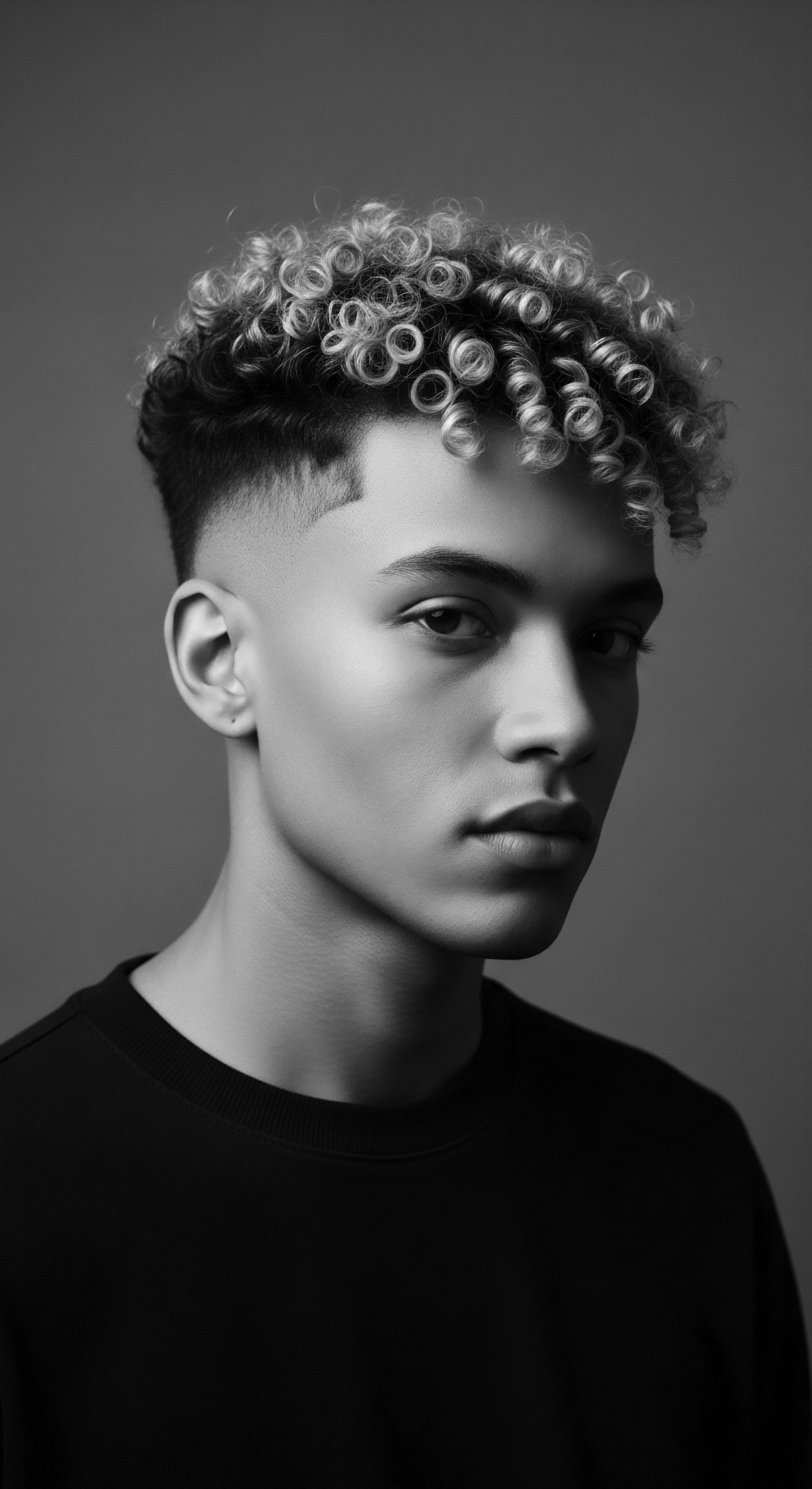
References
- Akbar, N. (2017). African Cultural Hair Practices ❉ An Interdisciplinary Analysis. Oxford University Press.
- Blay, E. (2007). African American Women and Hair ❉ Is It More Than Just Hair? Routledge.
- Byrd, A. D. & Tharps, L. L. (2014). Hair Story ❉ Untangling the Roots of Black Hair in America. St. Martin’s Griffin.
- Mercer, K. (1994). Welcome to the Jungle ❉ New Positions in Black Cultural Studies. Routledge.
- Patton, T. O. (2006). Our Own Sweet Time ❉ A Cultural History of Black Women and Hair. Peter Lang.
- Walker, A. (1983). In Search of Our Mothers’ Gardens ❉ Womanist Prose. Harcourt Brace Jovanovich.
